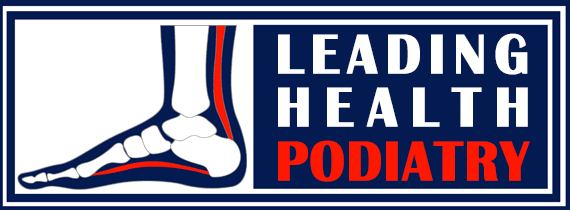Hamstring Injury
Hamstring Injury Treatment by Podiatrists
Hamstring injury is common in both social and elite athletes, affecting individuals in a wide range of sports such as AFL, soccer, tennis, dancing, skiing, and running. These injuries often occur during rapid acceleration, sudden changes in direction, or overstretching. While hamstring injuries can range from mild strains to complete ruptures, effective treatment is crucial for recovery and to prevent future injury. As specialists in musculoskeletal injuries, podiatrists offer various treatments to promote healing and get you back to your active lifestyle.
What is a Hamstring Injury?
The hamstrings are a group of three muscles at the back of the upper leg that play a vital role in bending the knee and straightening the hip. A hamstring injury typically refers to a strain or tear of one or more of these muscles or tendons. The injury can occur due to overstretching, rapid acceleration, or fatigue during sports or physical activity.
Hamstring injuries are graded based on severity, ranging from mild strains to partial tears, and in severe cases, complete ruptures. The treatment plan will depend on the severity of the injury and the patient’s specific needs.

Treatment Options for Hamstring Injuries
Podiatrists use a variety of advanced treatments to address hamstring injuries and promote faster recovery. These treatments not only help relieve pain but also improve muscle function and prevent future injuries.
1. Shockwave Therapy
Shockwave therapy uses high-energy sound waves to stimulate the healing process in injured tissues. By improving blood flow and promoting tissue regeneration, shockwave therapy can help reduce pain, improve flexibility, and speed up recovery, especially in chronic hamstring injuries.
2. Dry Needling
Dry needling targets tight muscle knots and trigger points within the hamstring muscles. Fine needles are inserted into these points to release muscle tension, improve circulation, and alleviate pain. This technique is particularly effective for muscle tightness and can be used alongside other treatments for a faster recovery.
3. Taping
Kinesiology taping is an effective way to support the injured hamstring without restricting movement. By applying tape along the muscle, a podiatrist can help reduce strain, swelling, and inflammation while improving muscle performance. Taping can also be used to prevent further injury during rehabilitation.
4. Custom Foot Orthotics
Biomechanical issues, such as abnormal foot function, can contribute to hamstring injuries. Custom foot orthotics can correct these issues by redistributing pressure and supporting the foot’s natural alignment. This helps reduce strain on the hamstrings and improves overall movement mechanics, which can prevent further injuries.
5. Stretching and Strengthening Exercises
Podiatrists prescribe specific stretching and strengthening exercises to improve flexibility, strength, and balance in the hamstring muscles. These exercises help restore normal function to the muscles and reduce the risk of re-injury by targeting tight areas and strengthening weakened muscles.
How to Know if You Have a Hamstring Injury
Symptoms of a hamstring injury vary depending on the severity. Common signs include:
- Mild Strain: Pain after activity, weakness, and muscle tightness.
- Partial Tear: Immediate pain, tenderness, difficulty bearing weight, and pain when bending the leg.
- Complete Tear: A popping sensation, sudden stabbing pain, bruising, inflammation, and inability to bear weight on the affected leg.
If you experience any of these symptoms, it’s important to seek professional advice from a podiatrist to assess the injury and determine the best course of treatment.
Recovery and Rehabilitation for Hamstring Injuries
Recovery time for a hamstring injury varies, but with the right treatment plan, many individuals recover within weeks. The goal of rehabilitation is to address underlying biomechanical issues, restore muscle function, and gradually return to activity.
Podiatrists work with patients on a tailored recovery plan that may include shockwave therapy, dry needling, custom orthotics, and specific exercises to strengthen the hamstrings and prevent future injuries.
For more severe injuries, such as complete tears, surgery may be required, and a podiatrist can refer you to a specialist for further treatment.
Why See a Podiatrist for a Hamstring Injury?
Podiatrists are experts in lower limb biomechanics and are trained to treat a wide range of musculoskeletal injuries. By assessing your gait, movement patterns, and biomechanics, they can develop a personalized treatment plan that targets the root cause of your hamstring injury. Whether you’re an athlete recovering from an injury or someone experiencing hamstring pain, a podiatrist can help you recover faster and reduce the likelihood of re-injury.
Get Expert Treatment for Hamstring Injuries
If you suspect a hamstring injury or are recovering from one, book an appointment with our experienced podiatrists today. We will assess your injury and provide effective treatment options tailored to your specific needs. Don’t let a hamstring injury hold you back – take the first step toward recovery today!
